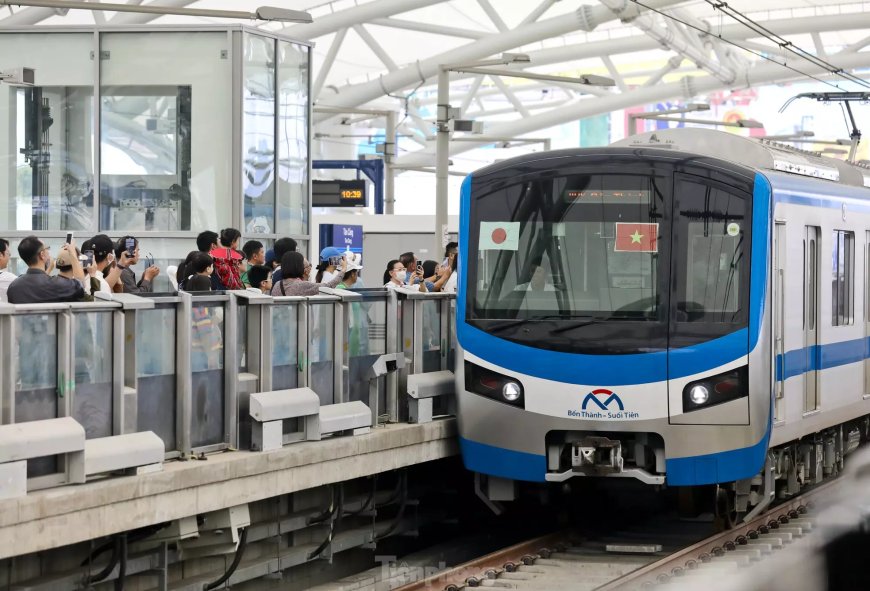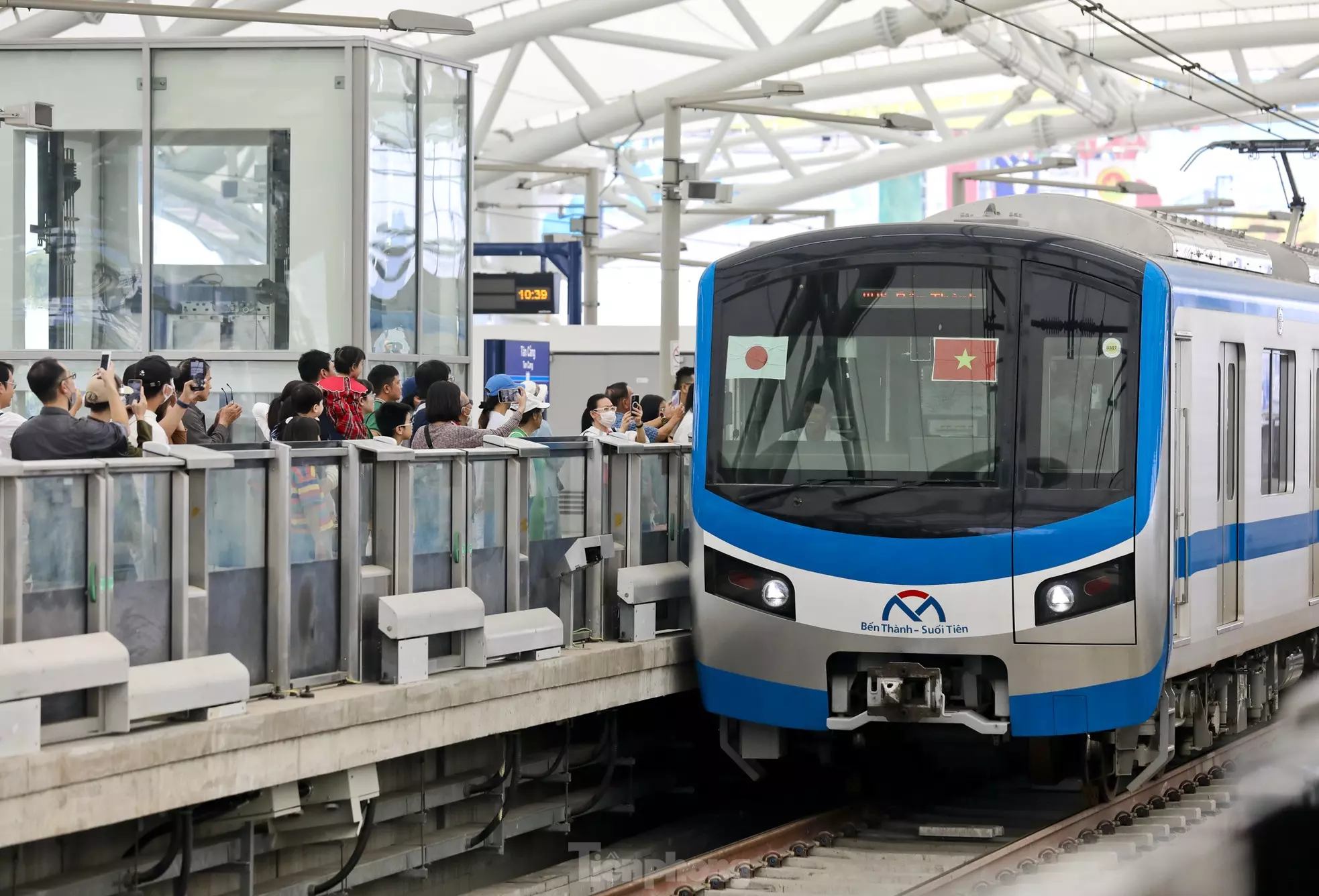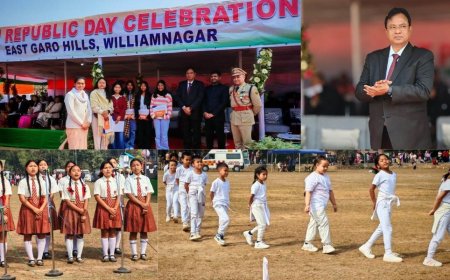Patralekha Chatterjee | Past, present and future: A Vietnamese takeaway
I kicked off 2025 with an unforgettable ride in Ho Chi Minh City’s metro line. The city, formerly called Saigon, inaugurated its metro line just a few days earlier after more than a decade of delays. The rides were free for the first month. I have never seen so many people eager for a metro ride anywhere in the world. Nor such determination and ingenuity coalescing into a mix of celebration and chaos. That morning, when I arrived at the historic Ben Thanh Market station in the city’s District 1, there was already a mile-long queue of women, men, and children. It took me several hours in the queue, using the huge dollops of patience and skills I had acquired while boarding buses in Kolkata, to finally clamber aboard. Heart-warmingly, the journey was a delight. This was my second visit to Vietnam. A few years ago, I vacationed in Hanoi. What leapt out at me each time was the enormous progress this war-battered country had made and how it dealt with its “past”. “The past is the past. We are a young nation. There is no time to lose. We look to the future. The future is about more trade, collaboration, and learning from each other. And yes, with the United States as well,” said a young Vietnamese information technology professional sitting next to me in the metro. Many older Indians still see Vietnam through the prism of its war with the United States. But today’s Vietnam feels light-years removed from the images of war. It is not that Vietnam has forgotten its past or the horrors inflicted on it. Every bit of memorabilia from its protracted war with the United States -- which ended in 1975 -- is meticulously memorialised in its monuments and museums. The War Remnants Museum in Ho Chi Minh City, which attracts many visitors, including foreigners, showcases photos, documents, and objects manifesting consequences of the toxic Agent Orange sprayed by the US military during the Vietnam war. Vietnam continues to deal with its long-term impacts --health issues, birth defects, and environmental damage. There are walls of photographs documenting the horrors of war, including torture. There are also proud displays of captured US military hardware -- including planes and tanks. Clearly, Vietnam remembers. To a casual visitor, however, it does not come across as a country obsessing about its past, waging memory wars, or seeking to relive painful wounds. Just the opposite, in fact. Vietnam is firmly fixated on its future, catching up and getting richer. What can India -- the world’s fifth-largest economy, with a young population, growing clout and ambitions -- learn from Vietnam, a war-ravaged nation which pulled itself up by its bootstraps and is now a global manufacturing hub and one of the fastest growing countries in the world? The short answer: plenty. Both countries have dominantly young populations. Both are hugely aspirational. Most Vietnamese are too young to remember when the US-backed government in Saigon fell in 1975.The median age in Vietnam is around 33. In India, it is around 28. As an Indian used to frequent flaming wars of words over what happened centuries ago, who said and did what to whom, Vietnam strikes a chord about what we could do if only we put our minds to the present and did not fritter away national energy relentlessly discussing the past and trying to erase parts of it. Vietnam remains a one-party Communist state. Markers of Communism are everywhere. Walking around the heart of Ho Chi Minh City, one spots French luxury goods conglomerate Cartier’s flagship store. Right in front, flies the red flag of the Vietnamese Communist Party. A short distance away is the statue of iconic revolutionary leader Ho Chi Minh, who led the Vietnamese nationalist movement for more than three decades, fighting first against the Japanese, then the French colonial power and then the US-backed South Vietnamese. He was President of North Vietnam from 1954 until his death. But Vietnam now has the US as its biggest export market. Undoubtedly, Vietnam's approach to its past with the United States, particularly regarding the Vietnam War, is complex and multi-faceted. Over the decades, the country has navigated a delicate balance between the traumatic effects of the war and engaging with the US. The changes that one now sees took a long time. Vietnam’s economy struggled in the years following the war. “The current honeymoon-like ties between the US and Vietnam did not happen overnight,” says a Vietnamese academic who currently lives outside the country. There were harsh sanctions (1975-1995). It took nearly two decades for bilateral ties to be normalised. This was not an easy period. Rebuilding a society is very tough. But Vietnam did it. Its GDP per capita is $4,347. India’s GDP per capita hovers around $2,485. As a woman, what also impressed me hugely about Vietnam was the safe feeling I got while walking around. Even in extremely crowded places, no one stalks or harasses women, much l


I kicked off 2025 with an unforgettable ride in Ho Chi Minh City’s metro line. The city, formerly called Saigon, inaugurated its metro line just a few days earlier after more than a decade of delays. The rides were free for the first month. I have never seen so many people eager for a metro ride anywhere in the world. Nor such determination and ingenuity coalescing into a mix of celebration and chaos.
That morning, when I arrived at the historic Ben Thanh Market station in the city’s District 1, there was already a mile-long queue of women, men, and children. It took me several hours in the queue, using the huge dollops of patience and skills I had acquired while boarding buses in Kolkata, to finally clamber aboard.
Heart-warmingly, the journey was a delight.
This was my second visit to Vietnam. A few years ago, I vacationed in Hanoi. What leapt out at me each time was the enormous progress this war-battered country had made and how it dealt with its “past”.
“The past is the past. We are a young nation. There is no time to lose. We look to the future. The future is about more trade, collaboration, and learning from each other. And yes, with the United States as well,” said a young Vietnamese information technology professional sitting next to me in the metro.
Many older Indians still see Vietnam through the prism of its war with the United States. But today’s Vietnam feels light-years removed from the images of war.
It is not that Vietnam has forgotten its past or the horrors inflicted on it. Every bit of memorabilia from its protracted war with the United States -- which ended in 1975 -- is meticulously memorialised in its monuments and museums.
The War Remnants Museum in Ho Chi Minh City, which attracts many visitors, including foreigners, showcases photos, documents, and objects manifesting consequences of the toxic Agent Orange sprayed by the US military during the Vietnam war. Vietnam continues to deal with its long-term impacts --health issues, birth defects, and environmental damage. There are walls of photographs documenting the horrors of war, including torture. There are also proud displays of captured US military hardware -- including planes and tanks.
Clearly, Vietnam remembers. To a casual visitor, however, it does not come across as a country obsessing about its past, waging memory wars, or seeking to relive painful wounds. Just the opposite, in fact. Vietnam is firmly fixated on its future, catching up and getting richer.
What can India -- the world’s fifth-largest economy, with a young population, growing clout and ambitions -- learn from Vietnam, a war-ravaged nation which pulled itself up by its bootstraps and is now a global manufacturing hub and one of the fastest growing countries in the world? The short answer: plenty.
Both countries have dominantly young populations. Both are hugely aspirational.
Most Vietnamese are too young to remember when the US-backed government in Saigon fell in 1975.The median age in Vietnam is around 33. In India, it is around 28.
As an Indian used to frequent flaming wars of words over what happened centuries ago, who said and did what to whom, Vietnam strikes a chord about what we could do if only we put our minds to the present and did not fritter away national energy relentlessly discussing the past and trying to erase parts of it.
Vietnam remains a one-party Communist state. Markers of Communism are everywhere. Walking around the heart of Ho Chi Minh City, one spots French luxury goods conglomerate Cartier’s flagship store. Right in front, flies the red flag of the Vietnamese Communist Party. A short distance away is the statue of iconic revolutionary leader Ho Chi Minh, who led the Vietnamese nationalist movement for more than three decades, fighting first against the Japanese, then the French colonial power and then the US-backed South Vietnamese. He was President of North Vietnam from 1954 until his death. But Vietnam now has the US as its biggest export market.
Undoubtedly, Vietnam's approach to its past with the United States, particularly regarding the Vietnam War, is complex and multi-faceted. Over the decades, the country has navigated a delicate balance between the traumatic effects of the war and engaging with the US. The changes that one now sees took a long time. Vietnam’s economy struggled in the years following the war.
“The current honeymoon-like ties between the US and Vietnam did not happen overnight,” says a Vietnamese academic who currently lives outside the country. There were harsh sanctions (1975-1995). It took nearly two decades for bilateral ties to be normalised.
This was not an easy period. Rebuilding a society is very tough. But Vietnam did it. Its GDP per capita is $4,347. India’s GDP per capita hovers around $2,485.
As a woman, what also impressed me hugely about Vietnam was the safe feeling I got while walking around. Even in extremely crowded places, no one stalks or harasses women, much like in most parts of Southeast Asia.
The Asian Street is hugely seductive. That explains why so many tourists, including from India, are visiting countries like Vietnam and Thailand. But the street’s charm does not hinge only on street life and street food, it is also about offering a sense of safety.
Which brings me to a very important issue -- the status of women, how they live and work. A key cultural factor which works to Vietnam’s advantage is the high proportion of dual incomes. Vietnam’s male and female labour force participation rates were 77.8% and 68.5% last year, according to International Labour Organisation estimates. In India, women's labour force participation rate is 33% compared to 77% for men, the World Bank said in 2023. No Indian state has a female labour force participation rate above 51%.
Vietnam has invested a lot not only in infrastructure but also in human development. The adult literacy rate is approximately 96%. India's adult literacy rate is around 77%. The maternal mortality ratio (the number of women who die from pregnancy-related causes while pregnant or within 42 days of pregnancy termination per 100,000 live births) in Vietnam was 46 in 2020. Despite recent progress, India’s maternal mortality ratio was 97 per 100,000 live births in 2018-20.
Today, Indian tourists, young and old, are flocking to Ho Chi Minh City, now the throbbing, bustling commercial capital of Vietnam. A holiday in the country is affordable and it is an attractive destination. It also offers a compelling message on how to process the past, its pain and trauma. Vietnam shows that bitter enemies can become strategic partners.
ENDS






































